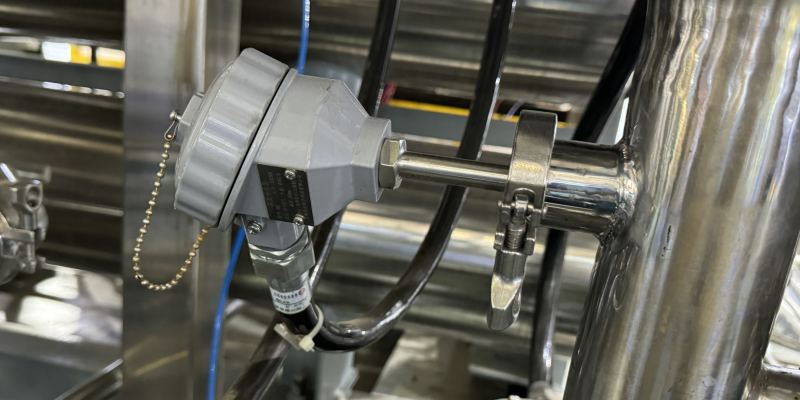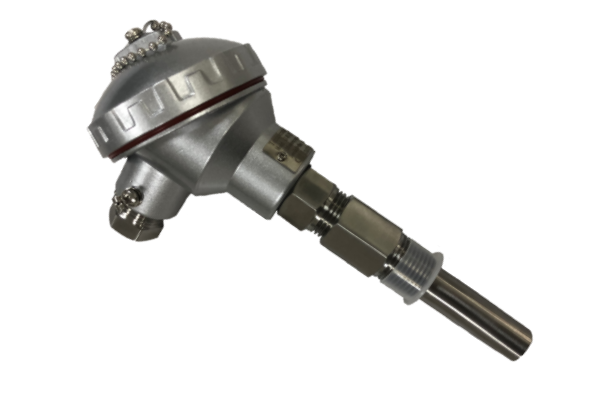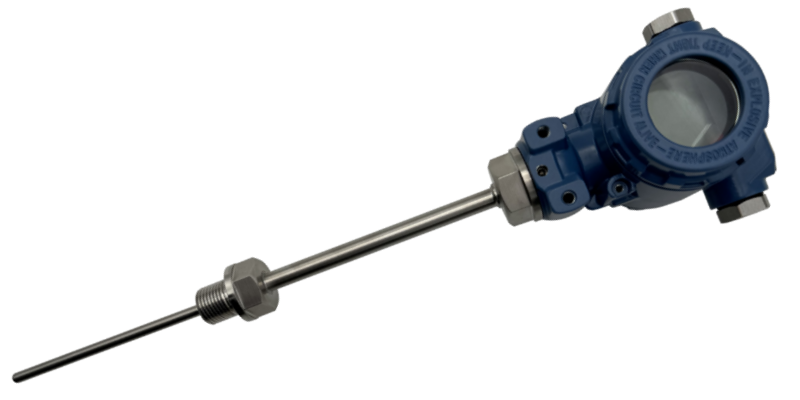Temperature measurement is one of the critical aspects in process control among industries. Resistance Temperature Detector (RTD) and Thermocouple (TC) are two of the most commonly used temperature sensors. Each of them has its own principle of operation, applicable measuring range and features. Comprehensive understanding of their characteristics contributes to dispelling doubts and making informed decision on process control. Like one may wonder how to choose substitute when current RTD device need replacement, would another thermal resistance be fine or thermocouple be better.

RTD (Resistance Temperature Detector)
RTD operates on the principle that the electrical resistance of the metal material changes with temperature. Typically made from platinum, RTD Pt100 exhibits a predictable and nearly linear relationship between resistance and temperature where 100Ω corresponds to 0℃. Applicable temperature span of RTD is around -200℃~850℃. Nevertheless, if measuring range falls within 600℃ its performance can be further improved.
Thermocouple
Thermocouple is a device used to measure temperature through seebeck effect. It consists two dissimilar metals joined at each end. A voltage is generated that is proportional to the temperature difference between the heated junction (where measurement is taken) and the cold junction (consistently kept as a lower temperature). According to the combination of materials used, thermocouple can be divided into many categories that affect their temperature range and sensitivity. For instance, Type K (NiCr-NiSi) is sufficient for application up to about 1200℃ while Type S (Pt10%Rh-Pt) is capable of measurement up to 1600℃.

Comparison
Measuring range: RTD is mostly effective between span of -200~600℃. Thermocouple is suitable for upper extreme temperature from 800~1800℃ depending on the graduation, yet it is not generally recommend for measurement below 0℃.
Cost: Common types of thermocouple are typically less expensive than RTD. However, high-end graduations of thermocouple made from precious materials could be costly, and its cost might fluctuate with the precious metal market.
Accuracy: RTD is known high accuracy and repeatability,providing precise temperature readings for stringent temperature control requiring applications. Thermocouple is generally less accurate than RTD and not very proficient in low-temperature span (<300℃). Senior graduations would have improved precision.
Response Time: Thermocouple has a quicker response time compared with RTD, making it more resilient in dynamic process applications where temperature changes rapidly.
Output: The resistance output of RTD usually exhibit better performance on long-tern stability and linearity than thermocouple’s voltage signal. Outputs of both temperature sensor types can be converted to 4~20mA current signal and smart communications.

From the information above can we conclude that the decisive factor for the selection between RTD and thermocouple is the operating temperature span to be measured. RTD is the preferable sensor in the low-middle temperature range for its superior performance, while thermocouple is rather capable under higher temperature condition over 800℃. Back to the topic, unless there is a adjustment or deviation in process operating temperature, replacement of thermocouple is not very likely to result in significant benefit or improvement from original RTD application occasion. Feel free to contact Shanghai Wangyuan if there is any other concern or demand regarding RTD & TR.
Post time: Dec-30-2024



